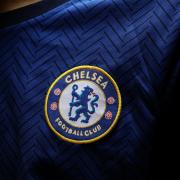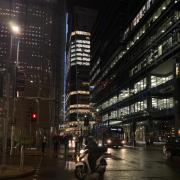
This Sunday saw what was easily the worst crash in Formula 1 since Jules Bianchi’s fatal collision in October 2014. Bianchi’s shocking - and easily preventable - death shook the motorsport at its heart, forcing safety officials and designers to do whatever they could to prevent a further tragedy. This included a revised safety cell to allow the vehicle to absorb more ‘G’s (the G-force count sustained during a collision), as well as the controversial halo.
This device, consisting of a very simple curved bar situated above the driver’s head, caused significant controversy upon its introduction into the sport. Drivers and motorsport fans alike argued that not only was it obstructive to the driver’s vision; it was also more dangerous in the event of the crash. This was due to it potentially providing an obstacle in the event of the driver needing to escape the cockpit in a hurry. The FIA reinforced their decision by claiming that it increases the survival rate of a driver by 17% in a simulation of 40 crash tests, as well as being able to deflect debris such as airborne carbon fibre segments and even tyres weighing 10kg flying at speeds of nearly 200mph. Despite these statistics, drivers and critics were still sceptical over the introduction of the halo, and continually pressured the FIA to reconsider their decision.
The first sign of the halo being an integral safety feature in F1 was seen in the 2018 Belgian Grand Prix, which saw Sauber driver Charles Leclerc being struck by Mclaren’s airborne Fernando Alonso, with both cars’ haloes taking the brunt of the impact and showing visible signs of damage. It was evident that, had the halo not been there, both drivers may have suffered severe or even potentially fatal head injuries. A minority of critics still stuck to their views, including Haas driver Romain Grosjean, an experienced French-Swiss who is due to retire at the end of this 2020 season. After Sunday’s events though, his views were instantly reversed after what was arguably the worst accident ever witnessed amongst the current grid.
Romain, in an attempt to dodge debris from his Racing Point colleague, positioned his car towards the right hand side of the circuit less than a minute into the race. He collided with the Russian AlphaTauri driver Daniil Kvyat, forcing his car into a spin and plunging it into a metal crash barrier at 137mph, with a force of around 53 Gs. The front section of the Haas car pierced the metal barrier, which acted as a wrench to immediately bring the car to a halt. The rear end, carrying significant momentum, was ripped off as a result of the sudden stop. Within a second, the Haas’ fuel was set alight, sending a fireball up instantly around the wreckage. Grosjean - who remained conscious despite the massive impact - was able to eject himself from the vehicle as swiftly as possible, although this still exposed him to the furious inferno to around 20 seconds. Thanks to rapid actions from safety car driver Alan Van Der Merwe and multiple marshalls, Grosjean escaped what could have been a fatal crash with only burns to his hands and ankles.
Grosjean’s crash has firmly silenced halo critics. As his car pierced the metal barrier, the halo pushed the structure around him, meaning he was unscathed throughout. Had the halo not been there, it is expected that his head would have been struck by the barrier. This would have almost certainly been fatal for him, especially as this exact situation occurred in 1973 and 1974 in Watkins Glen, USA, where both drivers involved were instantly killed by the impact. Other drivers, such as 7 time world champion Lewis Hamilton, backed this view. He stated that ‘The car, the cockpit. I don’t know what Gs he pulled but I’m just so grateful the halo worked,” Therefore, it is evident that the halo is an integral part to the modern safety of Formula 1 drivers, who frequently put their lives on the line for our entertainment. It also serves as an overkill way of silencing halo critics, as there is now sufficient evidence to prove that without the simple device there could have been more fatal accidents in what is a very dangerous sport.



























